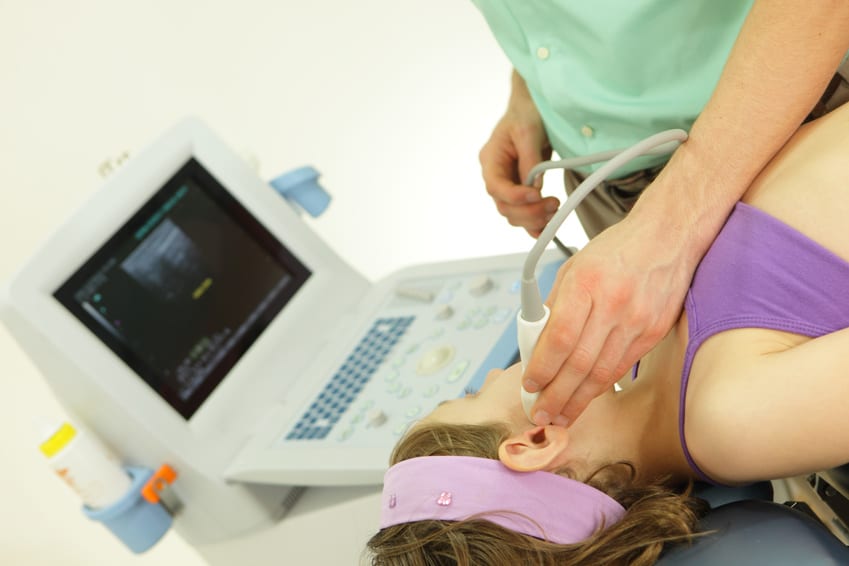Martins, W. R., Blasczyk, J. C., Oliveira, M. A., Gonçalves, K. F., Bonini-Rocha, A. C., Dugailly, P., & Oliveira, R. J. (2016). Efficacy of musculoskeletal manual approach in the treatment of temporomandibular joint disorder: A systematic review with meta-analysis. Manual Therapy, 21, 10-17. doi:10.1016/j.math.2015.06.009
Abstracted by: Douglas Cordel, SPT, ACSM EP-C from Missouri State University, Springfield, MO
This systematic review with meta-analysis evaluated the efficacy of the musculoskeletal manual approach (MMA) in the treatment of temporomandibular joint disorder (TMD). From an initial search of “temporomandibular joint disorder” and similar keywords on four databases (PubMed, The Cochrane Library, PEDro and ISI Web of Knowledge), 308 studies were identified to be potentially used in the analysis. Only randomized controlled trials published in English were included in this search. Ultimately, eight randomized controlled trials were included in the analysis, with the following exclusion criteria: subjects with surgical history on the temporomandibular joint, and interventions which the MMA was combined with other therapeutic resources with inadequate control comparisons. The methodological quality of the studies was assessed using the PEDro scale, revealing five of the eight as having high quality, and three having low quality, with a global “high quality” average. The outcome measures were range of motion (ROM) and pain. These were analyzed using standard mean difference pooled with 95% confidence interval and mean difference pooled with 95% confidence interval, respectively.
In the analyzed randomized controlled trials, there were a total of 375 total individuals with ages ranging from 12 to 44.5 years old, both males and females. The individual study size ranged from 26 to 122 individuals, with the comparison group size ranging from 13 to 41 individuals. The majority of studies employed combined articular (mandibular distraction and translation mobilizations, mandibular accessory movements, cervical mobilizations and craniocervical thrust) and extra-articular (myofascial release, muscle energy, cranial-sacral, muscle stretching, and tender trigger point) techniques.
The analysis showed significant results for increased active ROM, and decreased pain with active ROM. It did show improvement, albeit insignificantly, for increased passive ROM and decreased pain at rest. The authors caution the direct interpretation of the insignificant data, however. They cited that every study had considerably favorable data for MMA, and that this outcome could have been attributed to the large variability of confidence intervals between the individual studies. The authors mention that the results were shown to be effective in short term (</= 3-6 months), but that the goals of managing TMD are best achieved when a multi-disciplinary approach is employed, with respect to decreasing pain, and increasing muscular control and strength. The authors concluded that the effects of MMA for short-term treatment of TMD is superior to other conservative treatments for the same.
Other than the apparent biomechanical effects on active ROM, the analgesic effects of MMA as being neurophysiological in nature was discussed, based on recent and growing evidence. This model suggests that the decrease in pain is a result of several neurophysiological processes: actions mediated by the periaqueductal grey; lessening of temporal summation; reduction of blood and serum levels of cytokines and substance P levels; changes in muscle activity and motor neuron pool activity.
[wprpi]
Personal Commentary
Manual therapy is a common practice among several clinical practitioners, including physical therapists. As an adjunct or as a primary treatment method for the management of many musculoskeletal conditions, manual therapy is an effective tool. The author mentioned the neurophysiological effects of manual therapy, and this was outlined by Bailosky et al (2009). In a separate systematic review and meta-analysis asking a similar question to this publication, Armijo-Olivo et al (2016) reported that there were no clear advantages to TMD exercises over other forms of conservative management, but that manual techniques alone or combined with exercise showed promise.
It is reasonable to suggest that these short term effects on pain reduction can offer a greater efficacy in the overall treatment of the underlying TMD issues the patient may be facing. Effective pain control will allow clinicians to progress patients through the continuum of musculoskeletal management, from pain reduction, to motor control, to strength and function, to wellness.
References
Armijo-Olivo, S., Pitance, L., Singh, V., Neto, F., Thie, N., & Michelotti, A. (2015). Effectiveness of Manual Therapy and Therapeutic Exercise for Temporomandibular Disorders: Systematic Review and Meta-Analysis. Physical Therapy, 96(1), 9-25. doi:10.2522/ptj.20140548
Bialosky, J. E., Bishop, M. D., Price, D. D., Robinson, M. E., & George, S. Z. (2009). The mechanisms of manual therapy in the treatment of musculoskeletal pain: A comprehensive model. Manual Therapy, 14(5), 531-538. doi:10.1016/j.math.2008.09.001

